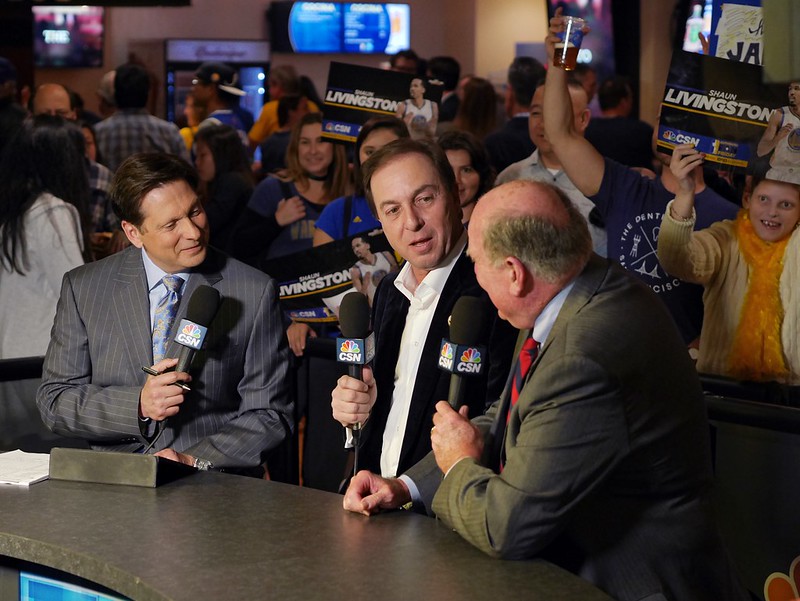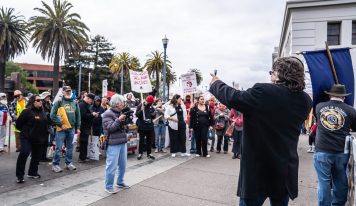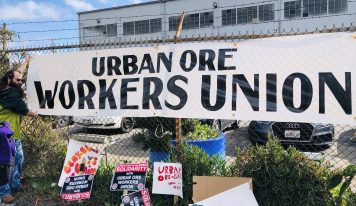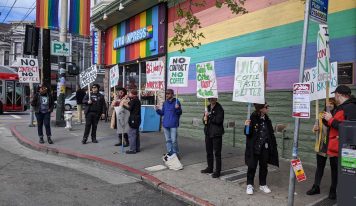San Francisco — A ruling by the California Supreme Court on December 9 will keep the Golden State Warriors on the hook for a $45 million debt to the city of Oakland. The Warriors owe the money to cover renovations to the Oakland Arena, which began in 1996 and were covered by $140 million in bonds issued to cover costs for 30 years. That same agreement permitted the team to leave after 10 years if it paid all the bond debt, but if it stayed longer than 20 years yet acted to end the agreement before 2027, the team was forced to continue paying off the bonds.
In 2018, the Warriors argued their move from Oakland, which was permitted under their contract, did not act to end the agreement as they had allowed the contract to expire by its own terms instead of actively separating. The presiding Superior Court judge rejected this argument, finding that the team ahd terminated the license agreement by failing to exercise its option to renew it and, therefore, must continue servicing the debt, a ruling that was upheld in August by the state’s First District Court of Appeal and now affirmed by the California Supreme Court’s denial of the appeal earlier this month.
The findings – and the Warriors’ attempt to get out from underneath money owed to the city – marks a just end to the latest chapter of a sports franchise extracting wealth from its home before premature abandonment for greener pastures, often in the form of better tax incentives and cash windfalls. The move from Oakland to San Francisco by Golden State, announced in 2012, is the latest matriculation of a beloved franchise in search of greater benefits and entrenchment of power. In January 2020, the Oakland Raiders made their move to Las Vegas official, leaving the Athletic’s as the Town’s sole professional franchise.
Oakland fans of the Warriors can enjoy this news as the latest dose of schadenfreude against co-owners Joe Lacub and Peter Guber, the latter of whom cited the new Chase Center as a “world-class entertainment venue”, indicating hopes that the San Francisco site would grow into an ideal place for music concerts and other events. This year’s pandemic and California’s latest COVID-19 restrictions have all but ensured that this scenario will not manifest anytime in the near future, putting their latest investment in dire straits. The NBA initially suspended its season in March, but later restarted under a ‘bubble’ in Orlando, where 22 teams were invited to complete their games. The Warriors, holding the worst record in the NBA at 15-50, were not included, effectively ending their season. Between this and Klay Thompson’s achilles, it has been a 2020 to forget for a franchise that were league champions just two years ago.

To state the obvious, relocating a sports franchise is a titanic undertaking and decision driven by business and opportunities. There is no doubt that Sioux Falls could rally an extremely enthusiastic fanbase for a local hockey team, but the NHL seems unlikely to capitalize anytime soon. As fans know, loving a team with all your heart and soul is no promise that it will love you back; indeed, the power imbalance in the relationship almost guarantees a doomed entanglement from the outset. Coupled with the financial incentives required to woo owners, house their franchise, and then be left holding the bag when they find greener pastures, and it’s a sordid affair indeed.
These debts are not necessarily localized either. A 2016 report by the Brookings Institute the construction of the new Yankee Stadium, which opened in 2009 and owed 68 percent of its financing to New York City-backed tax exempt municipal bonds – $1.7 billion worth. But being attributable to the city is misleading. From the report:
Because the interest earned on the municipal bonds is exempt from federal taxes, a large amount of tax revenue that would have been collected—had the bonds been issued as taxable—went toward the construction of the stadium. In other words, the Yankees received a federal subsidy to build their stadium. How much? About $431 million. That’s a lot of money, but it gets worse.
The loss in federal tax revenues was even higher than the subsidy to the stadium. High-income taxpayers holding the bonds receive a windfall tax break, resulting in an even greater loss of revenue to the federal government. In the case of Yankee Stadium, the additional loss was $61 million. That is, the federal government subsidized the construction of Yankee Stadium to the tune of $431 million federal taxpayer dollars, and high-income bond holders received an additional $61 million.
The same report finds that of the 45 major league professional sports arenas in the United States which have either been newly constructed or majorly renovated since 200, 36 of them were funded at least in part, with federal tax expenditures in the form of tax-exempt municipal bonds. In total, federal subsidies for professional stadiums hold to at least $3.2 billion, climbing to $3.7 billion if the total loss in tax revenue from tax breaks to bondholders is considered part of the total cost.
The logical follow-up question is: Is it worth it? The emotional toll may best be answered by a local seasoned-diehard, but does the economic scale make sense? The Berkeley Economic Review recently looked at the Atlanta Falcons’ new stadium, which cost $2 billion for construction, $700 million of which was borne by local taxpayers. The average stadium generates $145 million per year but none of this returns to the community, no more than the profits from oil drilled in Tulsa are spent there. Moreover, the same Brookings Institute report shows that the local impact is generally negative from an opportunity cost perspective, in that $700 million spent on a stadium instead of infrastructure, community projects, or areas like education or housing is a poor long-term investment.
And this doesn’t even scratch the surface of the billionaires these cities are bailing out. Dan Snyder, owner of the Washington Football Team, dragged his feet for years against changing the openly racist name of his franchise and was recently embroiled in a widespread sexual harassment lawsuit for allegedly dolling out the team’s cheerleaders as sex workers. Texans owner Bob McNair said the league “can’t have the inmates running the prison” in response to players taking a knee during the national anthem in protest against police brutality – and he later said he regretted apologizing for his comments. Rams owner Stan Kroenke drove a man to suicide (allegedly!) after purchasing 520,000 acres of Texas in 2016 and then evicting its residents.
It certainly shouldn’t be shocking that billionaires continue to exploit financial loopholes and coax carrots from cash-strapped cities when, by all rights, the citizenry should be using sticks to extract their unearned wealth and reinvest it into their communities. This is not the first article written about how the pageantry of a sports franchise and the emotions they engender come at the cost of actual community pillars, including schools and public infrastructure, and the scale of their cost is drastically tilted to one side. But until actual measures are taken against the latest methods of parasitic robber barons, it certainly will not be the last.
Photo Credit: “Oracle Arena Oakland” by jondoeforty1 is licensed by CC-BY-SA 2.0





